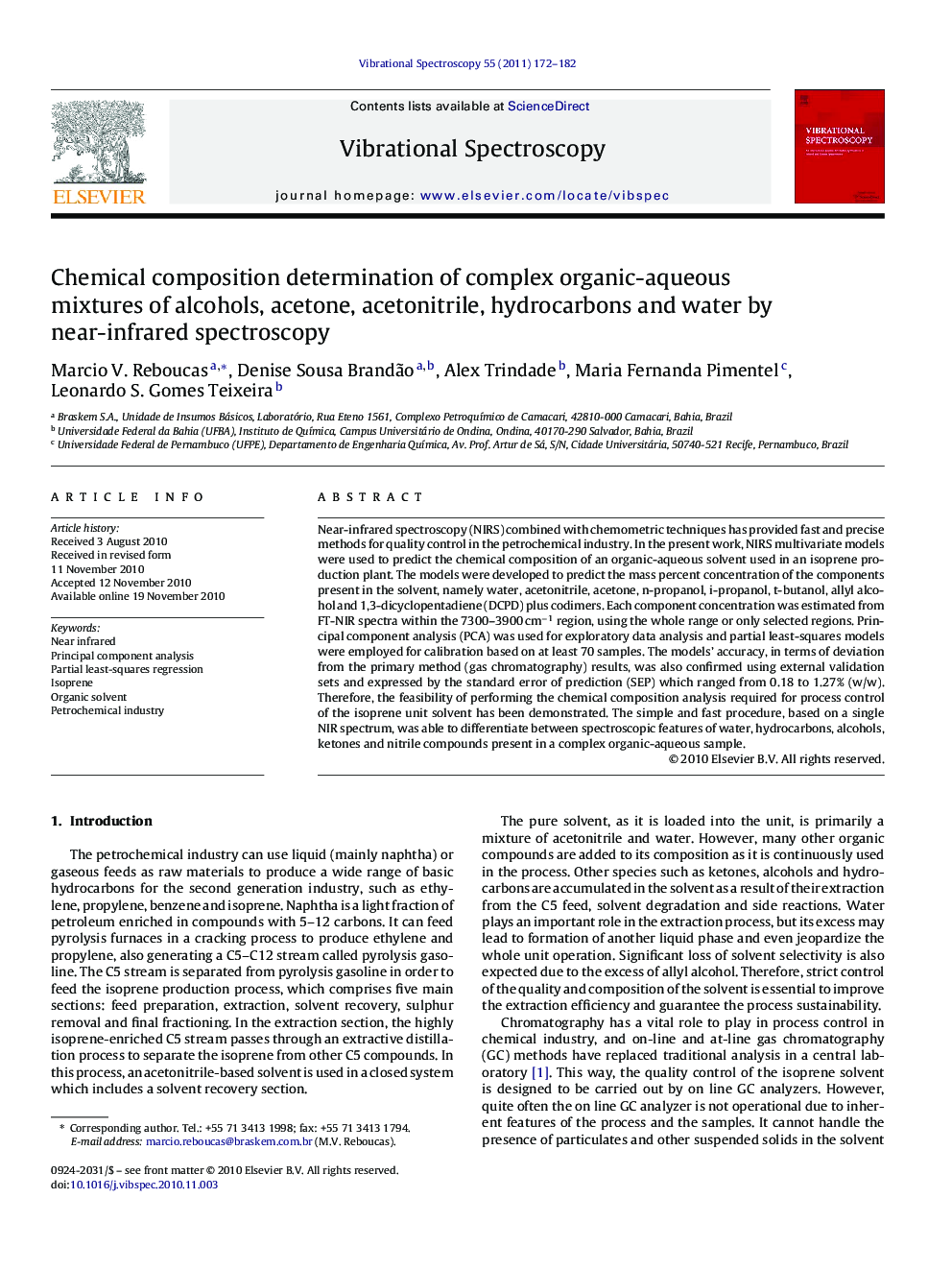| Article ID | Journal | Published Year | Pages | File Type |
|---|---|---|---|---|
| 10564641 | Vibrational Spectroscopy | 2011 | 11 Pages |
Abstract
Near-infrared spectroscopy (NIRS) combined with chemometric techniques has provided fast and precise methods for quality control in the petrochemical industry. In the present work, NIRS multivariate models were used to predict the chemical composition of an organic-aqueous solvent used in an isoprene production plant. The models were developed to predict the mass percent concentration of the components present in the solvent, namely water, acetonitrile, acetone, n-propanol, i-propanol, t-butanol, allyl alcohol and 1,3-dicyclopentadiene (DCPD) plus codimers. Each component concentration was estimated from FT-NIR spectra within the 7300-3900Â cmâ1 region, using the whole range or only selected regions. Principal component analysis (PCA) was used for exploratory data analysis and partial least-squares models were employed for calibration based on at least 70 samples. The models' accuracy, in terms of deviation from the primary method (gas chromatography) results, was also confirmed using external validation sets and expressed by the standard error of prediction (SEP) which ranged from 0.18 to 1.27% (w/w). Therefore, the feasibility of performing the chemical composition analysis required for process control of the isoprene unit solvent has been demonstrated. The simple and fast procedure, based on a single NIR spectrum, was able to differentiate between spectroscopic features of water, hydrocarbons, alcohols, ketones and nitrile compounds present in a complex organic-aqueous sample.
Keywords
Related Topics
Physical Sciences and Engineering
Chemistry
Analytical Chemistry
Authors
Marcio V. Reboucas, Denise Sousa Brandão, Alex Trindade, Maria Fernanda Pimentel, Leonardo S. Gomes Teixeira,
